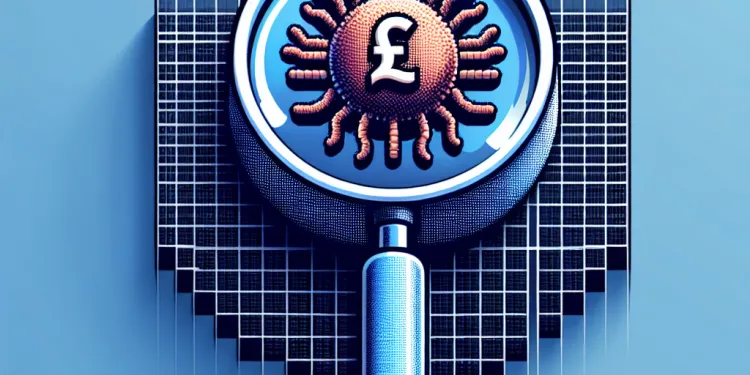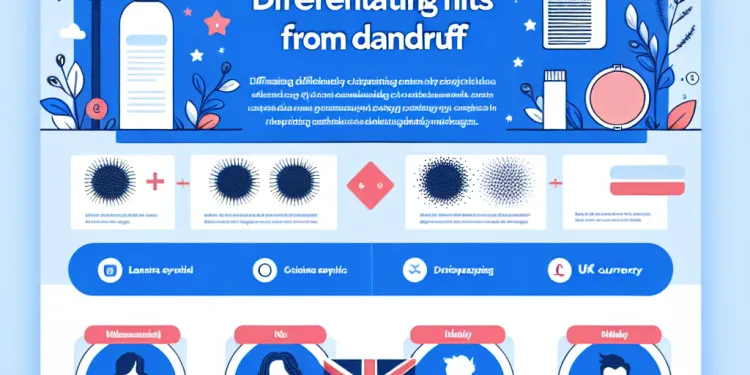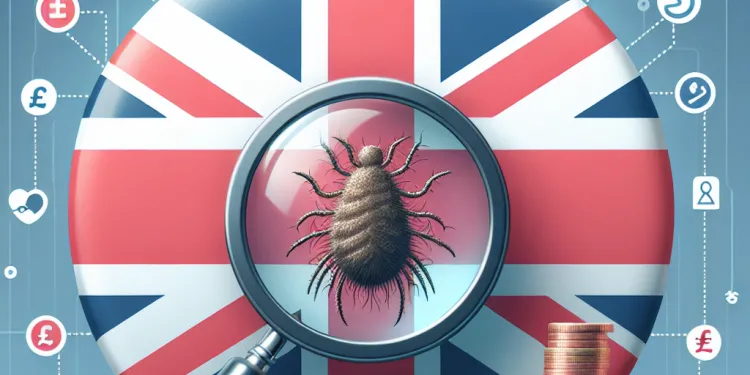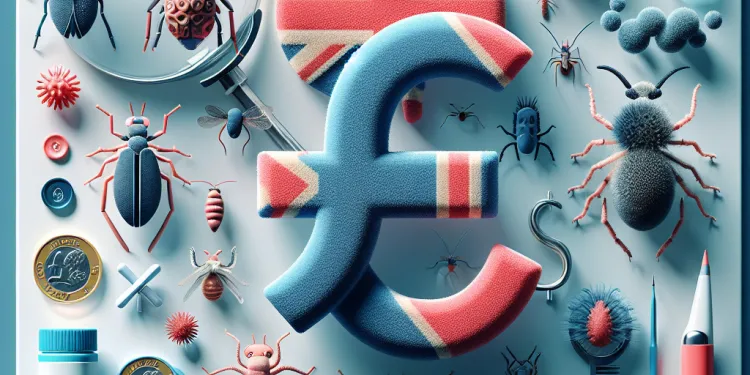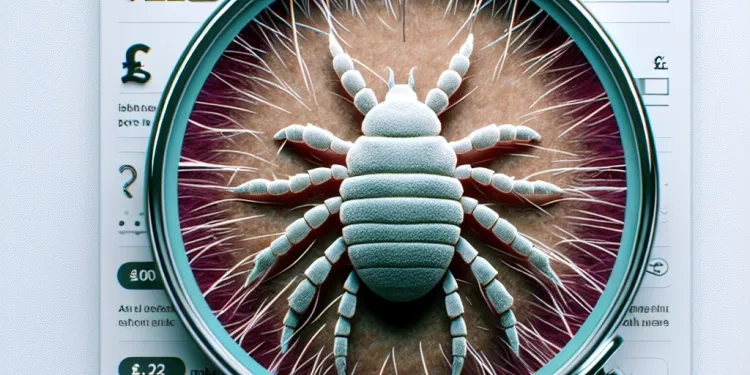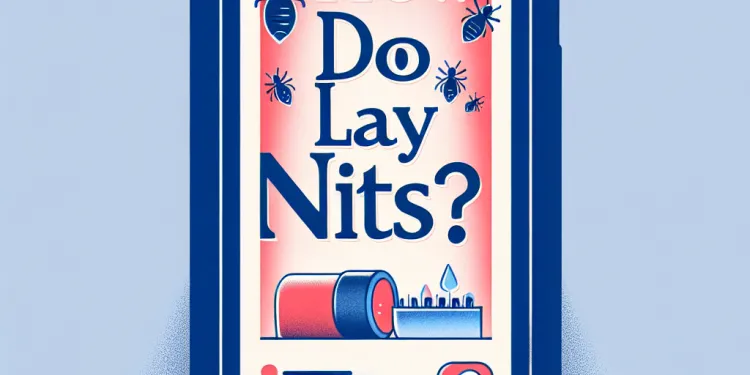
Find Help
More Items From Ergsy search
-
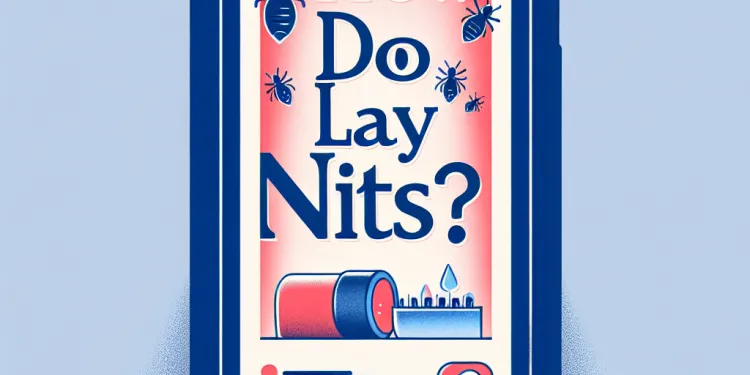
How do lice lay nits?
Relevance: 100%
-

Can nits hatch into lice?
Relevance: 100%
-
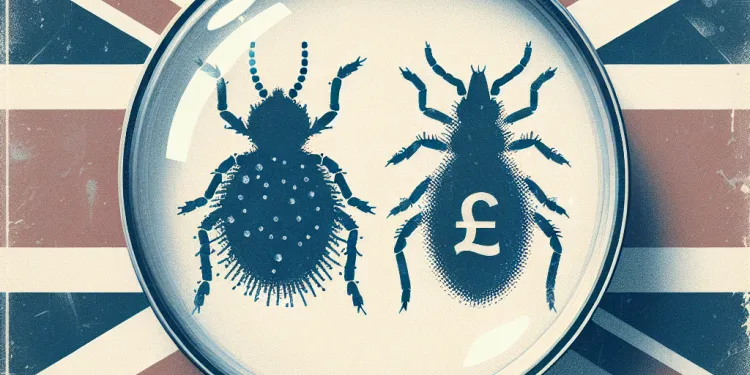
Are nits and head lice the same thing?
Relevance: 96%
-
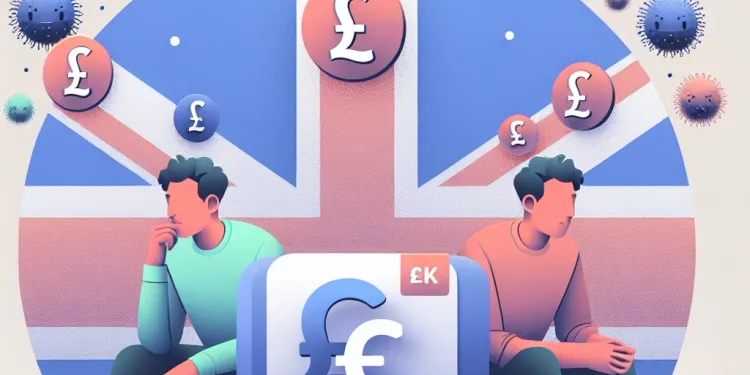
Are nits contagious?
Relevance: 81%
-

Are nits and head-lice the same thing?
Relevance: 77%
-

Do nits live off the scalp?
Relevance: 75%
-
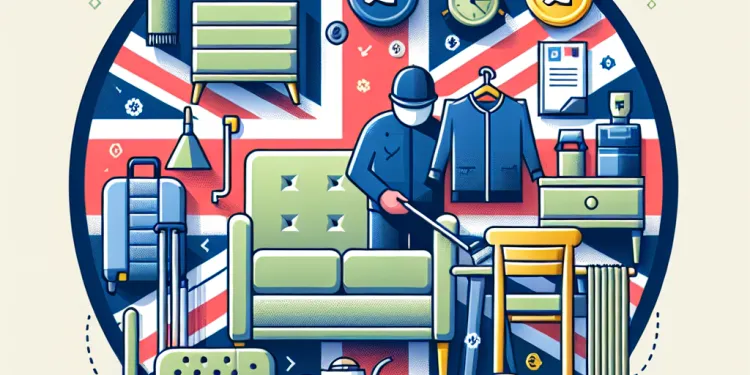
Can nits survive on furniture or clothing?
Relevance: 74%
-
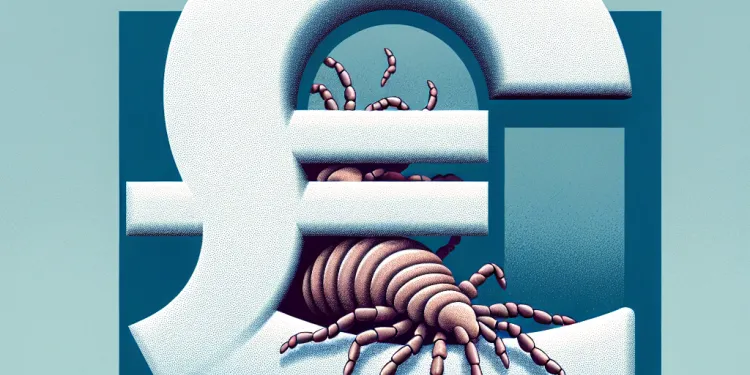
What are head lice?
Relevance: 73%
-

Where can nits be found?
Relevance: 72%
-
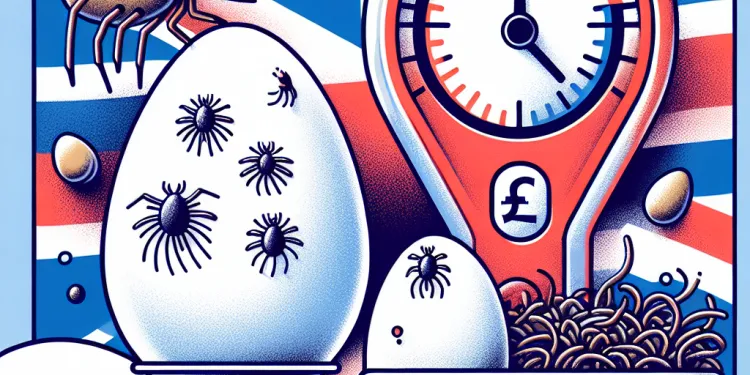
How long does it take for nits to hatch?
Relevance: 71%
Introduction to Lice and Nits
Lice are tiny, wingless insects that infest human hair and scalps. They are notorious for their rapid reproduction and the discomfort they cause to those infested. Understanding how lice lay nits, which are their eggs, is crucial for effective treatment and prevention.
The Life Cycle of Lice
The life cycle of lice consists of three stages: the nit, nymph, and adult. Nits are the eggs laid by adult female lice. Once laid, these nits adhere firmly to hair strands, primarily near the scalp where they remain until they hatch into nymphs. These nymphs eventually mature into adult lice, ready to continue the cycle.
How Lice Lay Nits
Adult female lice deposit nits on hair shafts using a glue-like substance secreted during the laying process. This substance ensures that the nits remain fixed in place and do not fall off easily. Lice typically lay their nits within 1.5 centimeters from the scalp, where the temperature and humidity are optimal for incubation.
Characteristics of Nits
Nits are often mistaken for dandruff or droplets of hair product, but they differ significantly in appearance and adhesion. Nits are oval-shaped and typically yellow or white. They are firmly attached to the side of the hair strand, distinguishing them from dandruff, which can be easily brushed off the hair.
Conditions Favourable for Lice and Nits
Lice thrive in environments close to the human scalp due to the ideal warmth and moisture. They also spread through head-to-head contact or sharing personal items such as hats, brushes, or pillows. Knowing these conditions helps in both understanding and preventing lice infestations.
Detection and Treatment
Detecting nits requires close inspection, often using a fine-toothed comb under bright light. Effective treatment involves the use of special lice-killing products and thorough combing to remove both lice and nits. Due to the strong adherence of nits to hair, daily combing is advised during treatment periods.
Prevention of Lice Infestations
Preventing lice infestations involves minimizing head-to-head contact and not sharing items that touch the hair. Regular checks and maintaining good hygiene also play a significant role in prevention. Educating children about the importance of avoiding sharing personal items helps reduce the spread in school environments.
Conclusion
Understanding the laying process and life cycle of lice is essential for controlling infestations. By identifying nits and employing effective treatment and prevention strategies, individuals can successfully manage and eliminate lice. Awareness and education are key elements in tackling this common yet frustrating problem.
Introduction to Lice and Nits
Lice are very small bugs without wings. They live in people's hair and on the scalp (the skin under your hair). Lice can make your head feel itchy and uncomfortable. They lay eggs called nits. To get rid of lice, you need to understand how they lay nits.
The Life Cycle of Lice
Lice have three life stages: nit, nymph, and adult. Nits are lice eggs. Female lice lay these eggs. Nits stick to your hair near the scalp. They stay there until baby lice, called nymphs, hatch from them. Nymphs grow into adult lice, starting the cycle again.
How Lice Lay Nits
Female lice lay nits on hair using a sticky substance. This makes the nits stay in place. Lice lay their nits close to the scalp, where it is warm and moist. This helps the nits to grow properly.
Characteristics of Nits
Sometimes, nits look like dandruff or small pieces of hair product. But nits have a different look. They are oval and usually yellow or white. Nits stick firmly to the hair and do not fall off like dandruff does.
Conditions Favourable for Lice and Nits
Lice like to live close to the scalp because it is warm and moist. Lice spread when people touch heads or share items like hats, brushes, or pillows. Knowing how lice spread helps us stop them.
Detection and Treatment
To find nits, you need to look carefully, using a comb with narrow teeth and good light. To treat lice, use special products that kill lice and comb your hair thoroughly to remove lice and nits. Nits stick tightly to hair, so combing every day is important when treating lice.
Prevention of Lice Infestations
To prevent lice, try not to touch heads with others or share things that touch hair. Check hair regularly and keep it clean. Teaching children not to share personal items helps stop lice from spreading at school.
Conclusion
To control lice, we need to know how they lay nits and their life cycle. By finding nits and using good treatments, we can get rid of lice. Learning about lice and teaching others helps us deal with this problem.
Frequently Asked Questions
What are lice nits?
Lice nits are the eggs laid by head lice. They are tiny, oval-shaped, and usually found attached to the hair shaft.
How do lice lay nits?
Lice lay nits by attaching them to human hair shafts close to the scalp using a glue-like substance to keep them firmly in place.
Where do lice prefer to lay nits?
Lice prefer to lay nits near the scalp where it's warm and safe, particularly around the nape of the neck and behind the ears.
How many nits can a louse lay?
A single female louse can lay around 6 to 10 nits per day and approximately 100 nits in her lifetime.
What conditions do lice need to lay nits?
Lice need a human host to feed on blood, warmth from the scalp, and suitable humidity levels to lay and incubate their nits.
Can lice lay nits on clothing or bedding?
No, lice typically do not lay nits on clothing or bedding. They require the warmth and proximity to the scalp that human hair provides.
How long do nits take to hatch?
Lice nits typically take about 7 to 10 days to hatch once they have been laid by a female louse.
How do lice attach nits to hair?
Lice secrete a glue-like substance that firmly attaches each nit to a hair shaft, making them difficult to remove.
Can lice lay nits on short hair?
Yes, lice can lay nits on short hair as long as there is enough length to attach the nit close to the scalp.
Do lice lay nits directly on the scalp?
No, lice lay nits on the hair shaft close to the scalp, not directly on the scalp itself.
Why is it difficult to remove nits from hair?
Nits are difficult to remove because they are firmly glued to the hair shaft by lice, requiring thorough combing or specific treatments to detach them.
Can lice lay nits without a human host?
No, lice need a human host for survival and will not lay nits without the warmth and food provided by human blood.
Do all nits hatch into lice?
Not all nits hatch; some may not develop properly, but the majority of viable nits will hatch into nymphs, which then mature into adult lice.
Can lice lay nits on other mammals?
Head lice are species-specific to humans and do not typically lay nits on other mammals.
How do I identify lice nits in the hair?
Lice nits are small, oval, and often yellowish-white. They are commonly found close to the scalp, attached to individual hair strands.
Are lice nits contagious?
The nits themselves are not contagious, but the lice that hatch from them can spread from person to person through close contact.
How far from the scalp are nits usually found?
Nits are usually found within 1/4 inch from the scalp, where the temperature and humidity are ideal for their development.
Can head lice lay nits in beards or eyebrows?
While it's rare, head lice can lay nits in beards or eyebrows if they have close contact and the conditions are right.
What happens to nits after they hatch?
After nits hatch, the empty shells usually remain attached to the hair, and the young lice, called nymphs, begin feeding on blood to grow.
Can hair treatments prevent lice from laying nits?
Some treatments, like those containing insecticides or natural oils, may deter lice, but complete prevention of nit laying requires regular checks and treatment.
What are lice nits?
Lice nits are the little eggs that head lice lay. They stick to your hair. They can be tiny and hard to see.
Here are some tips to help:
- Ask an adult to help you look for them.
- Use a special comb called a "nit comb" to find and remove them.
- You might need special shampoo to get rid of lice and nits.
Lice nits are lice eggs. They are very small and shaped like ovals. You usually find them stuck to hair.
How do lice lay eggs?
Lice are tiny bugs. They lay eggs called nits. Here is how they do it:
- First, a lice finds some hair on a person's head.
- Next, the lice lays an egg close to the scalp.
- The lice makes the egg stick to the hair with a special glue.
If you need help reading, you can:
- Ask a grown-up to read with you.
- Use a reading tool that reads the text out loud.
Lice are tiny bugs that live in hair. They lay eggs called nits. Nits stick to hair close to the skin on your head. Lice use something like glue to make sure the nits stay put.
If you need help reading, use tools like a text-to-speech app or colored overlays to make reading easier.
Where do lice lay their eggs?
Lice like to lay tiny eggs called nits close to the scalp, where it's warm. They usually choose the base of the hair, near the neck and ears. To help see nits, use a bright light and a magnifying glass. A fine-tooth comb can help find and remove them.
Lice like to put their eggs (called nits) close to your head. They like it here because it's warm and safe. They especially like the back of your neck and behind your ears.
How many eggs does a louse lay?
A female louse is a tiny bug that can lay eggs. She can lay about 6 to 10 eggs every day. In her whole life, she can lay about 100 eggs.
What do lice need to lay eggs?
Lice are tiny bugs that live in hair. They lay eggs, called nits, on hair strands. Here's what they need to lay their eggs:
- Warmth: Lice like warm places. Hair on your head is warm, which helps them a lot.
- Food: Lice need to eat. They feed on tiny amounts of blood from your scalp.
- Hair: Lice lay their eggs very close to the scalp on hair. The eggs stay stuck to the hair.
If you need help getting rid of lice and nits, you can ask an adult or a doctor for advice. They can suggest special shampoos or combs to use.
Lice are tiny bugs. They need to live on a person’s head. They drink blood and stay warm on the scalp. Lice babies, called nits, need the right amount of wetness to grow.
Do lice put eggs on clothes or beds?
No, lice do not usually lay eggs on clothes or bedding. Lice need the warmth of a person's head to lay eggs in hair.
How long do nits take to hatch?
Nits are tiny eggs from head lice. They stick to hair. Nits hatch in about 7 to 10 days.
If you need help reading, try using a ruler or your finger to follow each line. You can also ask someone to read it with you.
Lice eggs, called nits, usually take 7 to 10 days to hatch after a female lays them.
How do lice stick their eggs to hair?
Lice make a sticky stuff like glue. This glue helps them stick their eggs, called nits, to your hair. This makes the nits hard to take off.
Can lice lay eggs on short hair?
Lice are tiny bugs that can live in hair. They lay eggs called nits. Lice can lay nits on any hair, short or long.
Even if your hair is short, lice can still lay eggs. It's important to check for nits often. If you find lice or nits, you can use special shampoos to help get rid of them.
Ask an adult for help if you need it. There are also combs made to help remove nits and lice from hair.
Remember to wash bedding and hats, too. This keeps lice away from your things.
Yes, lice can lay eggs on short hair. The hair just needs to be long enough for the eggs to stick close to the skin.
Do lice put eggs right on the scalp?
Explanation: Lice are tiny bugs that live on your head. They lay eggs, called nits.
Nits are stuck to the hair, not the scalp. The bugs glue nits to strands of hair, close to the scalp.
Helpful Tips:
- Use a special fine-toothed comb to find and remove lice and nits.
- Look at the hair in bright light to see the nits better.
- Ask for help from an adult or a friend if needed.
No, lice put their eggs, called nits, on the hair close to the skin on your head, but not right on the skin.
Why is it hard to get nits out of hair?
Nits are tiny eggs from lice. They stick to hair very strong. This makes them hard to pull out.
Helpful tools:
- Use a fine-toothed nit comb.
- Try special shampoo for nits.
- Ask an adult for help.
Nits are tiny eggs from head lice. They are hard to take out because they stick very well to the hair. You need to comb your hair carefully or use special treatments to get rid of them.
Do lice eggs need a person to hatch?
No, lice need people to live. They won't lay eggs if they don't have a person's warmth and blood to feed on.
Do all nits turn into lice?
Nits are lice eggs. Most nits will hatch and become lice if they get warm. This means they are on a person's head. But some nits might not hatch.
You can use a special comb to remove nits and lice from the hair. Ask an adult for help if you find nits.
Not all lice eggs will hatch. Some eggs do not grow right. But most eggs that are healthy will hatch into baby lice. These baby lice grow up to be adult lice.
Can lice put eggs on animals like cats or dogs?
Head lice only live on people. They do not lay eggs on other animals.
How can I find lice eggs in the hair?
Here are some tips to help you:
- Look for tiny eggs near the scalp. Lice eggs, also called nits, are small and white or yellow.
- Use a bright light to help you see better.
- A magnifying glass can make the eggs easier to see.
- Use a special comb called a "nit comb." This helps catch the eggs.
Ask an adult for help if you are not sure. They can help you check for lice eggs.
Lice nits are tiny, egg-shaped things. They are often yellow-white. You usually find them near the scalp. They stick to single hair strands.
Can lice eggs spread to other people?
Nits, which are lice eggs, do not spread. But when lice hatch from them, they can move from one person to another if people are close together.
How far from your hair are nits usually found?
Nits are tiny eggs from head lice.
They usually stick close to your scalp.
Nits are often found very near to the base of your hair.
It can help to use a fine-tooth comb to check for nits.
Nits are tiny eggs from head lice. They are usually found very close to the scalp, about the length of your finger's tip. This is because they need the warmth and moisture from your head to grow.
If you find it hard to understand, you can use a magnifying glass to see nits better or ask someone to help you check your scalp. There are also special combs and shampoos that can help get rid of nits.
Can head lice lay eggs in beards or eyebrows?
Head lice are tiny bugs. They live in hair on your head. They like warm places. Lice lay their eggs, called nits, in hair.
But can they lay nits in beards or eyebrows? No, head lice usually lay eggs only on head hair. It's not common for them to lay eggs in beards or eyebrows.
If you have trouble reading, try these tips:
- Read slowly and take your time.
- Ask someone to read with you.
- Use pictures or drawings to help understand.
It doesn’t happen often, but sometimes head lice can put their eggs, called nits, in beards or eyebrows. This can happen if your beard or eyebrows touch someone else’s hair and the conditions are just right.
If you need help reading, you can:
- Ask someone to read with you.
- Use a reading app or tool that reads text out loud.
- Break the text into small parts and take your time.
What happens to nits after they hatch?
Nits are baby lice eggs. When they hatch, they become baby lice called nymphs. Nymphs are very tiny and look like adult lice but smaller. After a while, nymphs grow into adult lice. They live in hair and can make your head itchy.
If you find nits or lice, you can use a special comb to remove them. You can also use lice treatment shampoo to help get rid of them.
When lice eggs, called nits, hatch, the empty shells stay stuck to the hair. The young lice, called nymphs, start drinking blood to grow bigger.
Can hair treatments stop lice from making eggs?
Some treatments have bug-killing chemicals or natural oils that might stop lice. But to stop lice eggs, we need to check hair often and treat it.
Useful Links
- Ergsy carfully checks the information in the videos we provide here.
- Videos shown by Youtube after a video has completed, have NOT been reviewed by ERGSY.
- To view, click the arrow in centre of video.
- Most of the videos you find here will have subtitles and/or closed captions available.
- You may need to turn these on, and choose your preferred language.
- Go to the video you'd like to watch.
- If closed captions (CC) are available, settings will be visible on the bottom right of the video player.
- To turn on Captions, click settings .
- To turn off Captions, click settings again.
More Items From Ergsy search
-

How do lice lay nits?
Relevance: 100%
-

Can nits hatch into lice?
Relevance: 100%
-

Are nits and head lice the same thing?
Relevance: 96%
-

Are nits contagious?
Relevance: 81%
-

Are nits and head-lice the same thing?
Relevance: 77%
-

Do nits live off the scalp?
Relevance: 75%
-

Can nits survive on furniture or clothing?
Relevance: 74%
-

What are head lice?
Relevance: 73%
-

Where can nits be found?
Relevance: 72%
-

How long does it take for nits to hatch?
Relevance: 71%


